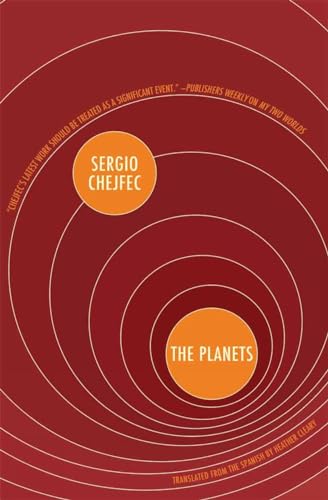My most mysterious reading experience of 2019 began with a dream, in which a friend arranged for me to meet with her literary agent. He had read my novel manuscript and told me he liked it very much, then handed me a musty pile of books. He instructed me to read them and absorb their lessons, and once I did I was to get in touch. We had a disagreement about something and I left. When I awoke, the agent’s name was on my tongue: Sergio Chejfec. If you’re like me then, you may have heard of his name, have an inkling that it belongs to a fiction writer whose work has been translated into English, or perhaps you even know this writer hails from Argentina and that his translations have been published by Open Letter. I was nonplussed by the clarity of his name and my seeming lack of connection to it, and so I followed this thread to see where it led, if it did.
 I headed downtown to Chicago’s Harold Washington Library and found two novels by Chejfec: My Two Worlds and The Planets. I picked up the latter first, and reader, I was stunned. The first line? “Dream, nightmare, truth.” The narrator dreams of a girl falling, mangled in an explosion, her unlikely name the name of one of the protagonists in the novel I’ve written, that in my dream Chejfec supposedly had read. The explosion was an occurrence that the narrator had previously dreamt: “Days earlier he had woken to a memory, at the time still unreal.” And on the second page of the novel: “Grino often wondered about the power of dreams, whether they simply reflected events, or if, perhaps, they catalyzed them.” Needless to say I checked out both books. I still cannot fathom how a dream led me to an author with whose books I feel such deep kinship. Chejfec was an author I didn’t know I needed to read, although, however, it seems that somehow I did.
I headed downtown to Chicago’s Harold Washington Library and found two novels by Chejfec: My Two Worlds and The Planets. I picked up the latter first, and reader, I was stunned. The first line? “Dream, nightmare, truth.” The narrator dreams of a girl falling, mangled in an explosion, her unlikely name the name of one of the protagonists in the novel I’ve written, that in my dream Chejfec supposedly had read. The explosion was an occurrence that the narrator had previously dreamt: “Days earlier he had woken to a memory, at the time still unreal.” And on the second page of the novel: “Grino often wondered about the power of dreams, whether they simply reflected events, or if, perhaps, they catalyzed them.” Needless to say I checked out both books. I still cannot fathom how a dream led me to an author with whose books I feel such deep kinship. Chejfec was an author I didn’t know I needed to read, although, however, it seems that somehow I did.
Sergio Chejfec writes deeply interior novels, concerned with the shape of time and how we experience moving through it, preoccupied with thought and memory; his characters are philosophical and enigmatic. The Planets concerns the lives of two men, close friends, who are separated when one, M, is disappeared (it was the ‘70s, Buenos Aires). Grino convinces himself in his swirl of memory that the two had been switched as children—M had always seemed the writer, and here he is, telling M’s story. He writes his memories as if he’s still searching, as if to uncover and reanimate this absent half.
At another point Grino retells a story he’d heard a woman tell: An ashtray fell, cracked, and one half disappeared, as if it was mysteriously reabsorbed by the universe. A friend conjectures, when asked, that if he couldn’t find the missing half, he’d assume it to be lost. What I’ve found in this book is more than coincidence, and yet it’s now influencing how I perceive the world, my realm of possibility; it’s even rewriting my history. Though, on some level, isn’t this what great literature does? I wonder at times, is it possible that I somehow unknowingly encountered this novel before? I find something impossible in encountering Chejfec in this way, and yet the notion is utterly enticing to me. It seems like the perfect response to this novel, and yet in my account time seems warped.
I am surprised again and again by Chjefec’s sense of interiority—which when done well in fiction, I adore—his focus on mystery, and his interrogation of how we encounter time passing and memory. In The Planets, Chejfec writes: “There I was wondering about the nature of an impossible event and, not only that, trying to find some explanation for its appearance along my path. This might seem ridiculous—all of life’s events are certainly interruptions, providential obstacles eternalized later by the course of events itself, and we know that to wonder about chance is to deny the power of destiny.”
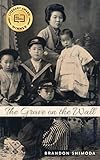 Another wonder of a book is Brandon Shimoda’s Grave on the Wall. His book draws on his nearly preternatural ability to perceive, draw connections between unlikely events (and also insert other texts and exchanges into his own as if they were conjured there first). He uncovers layer upon layer, connecting material and ethereal. It makes me think of Ocean Vuong saying in an interview that novel writing is a form of myth-making, and yet the best way to describe Grave on the Wall is that it’s doing the reverse. Teasing the sacred and profane from the mundane—whether it’s the appearance of Shimoda’s grandfather’s ghost or his encounter with his grandfather’s portrait when visiting the internment camp he’d been held at in Missoula during WWII. Shimoda asks how do we remember, and how do we metaphorically, or even physically, enter our ancestors’ graves? how do we attempt to conjure the individual names and faces of the dead when a memorial focuses on the grandiosity of destruction? On his third visit to Domanju—a less conspicuous memorial mound that holds the ashes of 70,000 killed by the bomb dropped on Hiroshima—Shimoda sees an entrance he’d never fathomed before: “ It suggested a clandestine, unending world. An underground network, a labyrinth. Shadow Hiroshima … I had not imagined that the mound could be entered.”
Another wonder of a book is Brandon Shimoda’s Grave on the Wall. His book draws on his nearly preternatural ability to perceive, draw connections between unlikely events (and also insert other texts and exchanges into his own as if they were conjured there first). He uncovers layer upon layer, connecting material and ethereal. It makes me think of Ocean Vuong saying in an interview that novel writing is a form of myth-making, and yet the best way to describe Grave on the Wall is that it’s doing the reverse. Teasing the sacred and profane from the mundane—whether it’s the appearance of Shimoda’s grandfather’s ghost or his encounter with his grandfather’s portrait when visiting the internment camp he’d been held at in Missoula during WWII. Shimoda asks how do we remember, and how do we metaphorically, or even physically, enter our ancestors’ graves? how do we attempt to conjure the individual names and faces of the dead when a memorial focuses on the grandiosity of destruction? On his third visit to Domanju—a less conspicuous memorial mound that holds the ashes of 70,000 killed by the bomb dropped on Hiroshima—Shimoda sees an entrance he’d never fathomed before: “ It suggested a clandestine, unending world. An underground network, a labyrinth. Shadow Hiroshima … I had not imagined that the mound could be entered.”
This fall in Budapest I entered what was once a temporary grave for many, a wartime hospital and later a nuclear bunker built into a series of caves in the hill that borders the west side of the Danube. The lobby sells outdated items such as old gas masks and glass syringes as cheap memorabilia. What I didn’t realize before the tour is that part of the former nuclear bunker had been transformed into a memorial to the victims of the atom bomb. Melted glass and images of the destruction at Hiroshima and Nagasaki are present as are maps of international cities where hypothetical epicenters and fireball perimeters are mapped out. They are meant to leave an impression, I suppose, of how swiftly a city a visitor knows intimately could be wiped out. I wasn’t surprised to find Washington, D.C., represented here, but I couldn’t have fathomed that the imaginary bomb detonated over the metropolitan area would be one with multiple smaller nuclear warheads, with one situated directly above my hometown of Accokeek, Maryland, a town so small that friends from high school 20 miles away didn’t know where it was. I’d travelled thousands of miles to a city where I didn’t speak the language to witness this fantasy of a horror at home, in a way that I’d never so explicitly imagined.
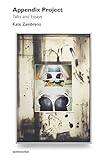
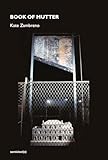
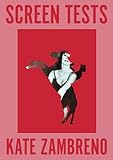

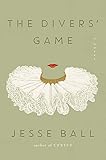
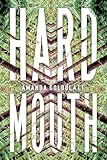 Is this the definition of unheimlich? Or is this the opposite, by finding the familiar in the foreign? Perhaps the two are similar. In Kate Zambreno’s “Translations of the Uncanny,” which appears in her Appendix Project—a series of essays that developed from and beyond her Book of Mutter—she writes, “home is tied up with the concept of what is hidden.” She writes of her friendship with the writer Sofia Samatar and the inherently uncanny nature of correspondences in their thinking and reading and general simultaneity of thinking, and how this happens so frequently they no longer find it surprising. This essay is a meditation on uncertainty and chance occurrences, of how, if we’re aware, we move through time witnessing crossed signals and ripples: “what can double, return, echo—I keep on thinking of the phrase , a copy within a copy. … How can literature yearn towards art, how can image ghost text?”
Is this the definition of unheimlich? Or is this the opposite, by finding the familiar in the foreign? Perhaps the two are similar. In Kate Zambreno’s “Translations of the Uncanny,” which appears in her Appendix Project—a series of essays that developed from and beyond her Book of Mutter—she writes, “home is tied up with the concept of what is hidden.” She writes of her friendship with the writer Sofia Samatar and the inherently uncanny nature of correspondences in their thinking and reading and general simultaneity of thinking, and how this happens so frequently they no longer find it surprising. This essay is a meditation on uncertainty and chance occurrences, of how, if we’re aware, we move through time witnessing crossed signals and ripples: “what can double, return, echo—I keep on thinking of the phrase , a copy within a copy. … How can literature yearn towards art, how can image ghost text?”
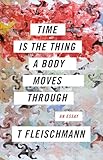
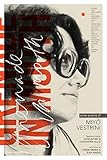
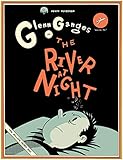


 But also, how can text ghost image? I’m thinking of Zambreno’s linguistically taut and intellectually riveting Screen Tests, and precisely of how its story series of “Sontag in the Bear Suit” one-ups the image by using it as a springboard for pithy wordplay. Literary figures pepper Zambreno’s stories as if family, or at least familiar, their familiarity born of vast reading, which is often the best way to be intimate with a writer.
But also, how can text ghost image? I’m thinking of Zambreno’s linguistically taut and intellectually riveting Screen Tests, and precisely of how its story series of “Sontag in the Bear Suit” one-ups the image by using it as a springboard for pithy wordplay. Literary figures pepper Zambreno’s stories as if family, or at least familiar, their familiarity born of vast reading, which is often the best way to be intimate with a writer.
I also loved Max Porter’s language-drunk Lanny, Jesse Ball’s Divers’ Game for its perfect first page alone (though, keep on!), and Amanda Goldblatt’s wonderfully strange Hard Mouth whose prose leaves an indelible mark. The pleasure, pain, and beauty of forever becoming in T Fleischmann’s Time Is the Thing a Body Moves Through. Miyó Vestrini’s ferocity and desiring toward death in the collection Grenade in Mouth, translated by Anne Boyer and Cassandra Gillig. I found deep companionship in Kevin Huizenga’s The River at Night—with Glenn’s late-night coffees and sleepless nights, his bibliophilia and endless stream of existential thinking. Jenny Odell’s How to Do Nothing gave me hope that individually and in communities we will be able to delineate spaces apart—both online and off— from social media, from expectation, from demands of efficiency and production, and where we may again move toward the communal without commercial interference.
Miriam Toews’s Women Talking has such a pleasing structure and yet is so destabilizing in its #metoo, as a group of Mennonite women must decide whether to stay and fight or leave their deeply traditional and community, when they discover that some of their men have been using animal anesthesia to rape with impunity for years. Last and never least is Amina Cain’s soon-to-be-published Indelicacy. Its title is a swift, elegant repudiation. I develop a synesthesia when considering Cain’s writing. I imagine Cain like Virginia Woolf’s Lily Briscoe standing before a canvas, painting her book with lush but controlled strokes, the painting itself airy, allowing ample room to move within and breathe.
More from A Year in Reading 2019
Don’t miss: A Year in Reading 2018, 2017, 2016, 2015, 2014, 2013, 2012, 2011, 2010, 2009, 2008, 2007, 2006, 2005
